The History of Bolton Road Methodist Church
There are records of Methodist meetings in Birtle as early as 1749 and John Wesley visited a Preaching House at Pits o'th Moor in 1774. But Christian worship did not come to Elton until the building of All Saints Church of England church on Goose Hill Bank in 1843.
Three years later a Wesleyan Methodist church was built at Woolfold on the road to Tottington and in 1867 Wood Street United Methodist church, originally known as Mount Pleasant, was built among the rapidly growing industries of the Elton district.
Perhaps the origins of the Bolton Road church can be traced to the formation of the Bury Wesleyan Mission in 1877. Earlier services had been held in the cottage of Mary Ann Brooks in Wellington Street in 1873, but a rapidly growing congregation prompted them to move to rooms rented from Bury Co-op in Hopkinson Street. But within a short time the Co-op reclaimed the rooms and the congregation was obliged to move to dilapidated
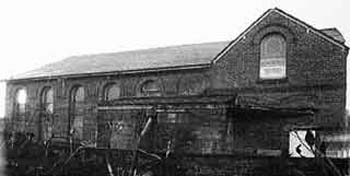 premises in Albion Street. The inadequacy of the building prompted them to realise the need for a custom built church and in 1881 local architects Maxwell and Tuke were retained to design a school and chapel on a site in Fairy Street, off Bolton Road.
premises in Albion Street. The inadequacy of the building prompted them to realise the need for a custom built church and in 1881 local architects Maxwell and Tuke were retained to design a school and chapel on a site in Fairy Street, off Bolton Road.
The new building was opened on 13th April 1882, despite having faced several problems including severe storm damage and the threat of subsidence from the construction of a railway siding nearby. By now the township of Elton was growing and so, too, was the school in Fairy Street. In 1884 it had 213 scholars and 28 teachers.
By the early 1900s once again the search was on for new premises. Funding had begun as early as 1903 but it was not until July of 1912 that a procession marched behind a large banner from Fairy Street to a new site in Bolton Road to lay the foundation stones of the new building.
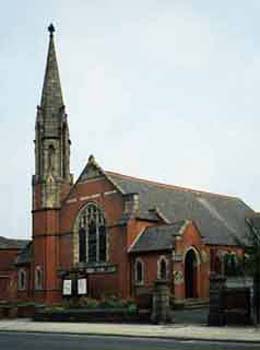 In April of the following year the building was complete and opened 'despite heavy showers' on Saturday the 19th. However, according to a report in the Bury Times, in January of that year 'a young woman in her twenties in a long skirt, prim high neckline and hair piled high, had been hoisted to the top of the 70-foot church spire by a rope at her own request'. Having reached the top she there laid the final stone and contributed £5 to the building fund. Her name was May Rhodes and she was the daughter of the landlady of the nearby Wellington Hotel, regularly frequented by the building workers who, no doubt, gave the stunt much encouragement.
In April of the following year the building was complete and opened 'despite heavy showers' on Saturday the 19th. However, according to a report in the Bury Times, in January of that year 'a young woman in her twenties in a long skirt, prim high neckline and hair piled high, had been hoisted to the top of the 70-foot church spire by a rope at her own request'. Having reached the top she there laid the final stone and contributed £5 to the building fund. Her name was May Rhodes and she was the daughter of the landlady of the nearby Wellington Hotel, regularly frequented by the building workers who, no doubt, gave the stunt much encouragement.
Now the country was on the brink of the First World War, 1914-18, and during the years of conflict attendances at the church declined. In 1917 there was an appeal to limit the length of services to one and a quarter hours to retain more members.
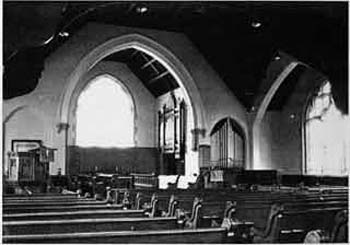
With peace restored younger members returned and in 1922 a Sports Club was formed. Much investment was made in pavilions and courts but it was on rented land and when the option to purchase was taken in 1933 it put a considerable strain on finances. Nevertheless the inter-war years reflected an active community within the church with a Sunday School, a Drama Society, Men's and Ladies' groups and a notable choir. The church regularly took part in Bury's annual Whit Friday 'Walks' but these were suspended following the outbreak of the Second World War in 1939.
The sports field was taken over by the War Ministry during this period, but when peace was restored new problems arose. There was a growing feeling that the increasing membership of the sports club was not reflected in church attendances. An uneasy relationship prevailed over many years as the church yielded to an increasing demand for non-competitive Sunday sport, first Tennis, then Rounders. In 1983 it was resolved that 'The club should separate from the church by the deletion of the word 'Methodist' from its title'. It was, however, to be another four years before it became simply 'Bolton Road Sports Club'.
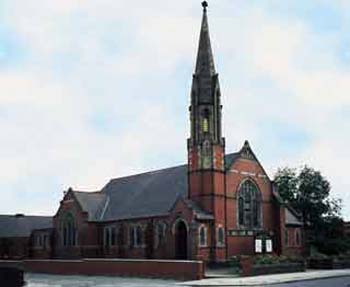
By now the church had other problems. A survey of the church building revealed the need for major repairs and serious consideration was given to the construction of a new building. In 1989 the Church Council resolved that rather than renovate the present premises a new church should be built on a part of the Sports Club field and the remainder of the land sold to finance the project.
More problems arose. The local authority initially rejected the proposal to build on the site, but a plan by a development company presented to the Church Council in 1992 caused enthusiastic members to give the Sports Club just ten weeks to leave their premises. Loud protests ensued and the threat was withdrawn. In April 1993 the plan was rejected.
A year later calmer voices had prevailed and the search began for another Sports Club site. Eventually land off Elton Vale Road was secured, a new pavilion was built and the new club was opened on Sunday 9th April 2000. Meanwhile the church in Bolton Road was increasingly subjected to vandalism, bringing greater urgency to the need for new premises.
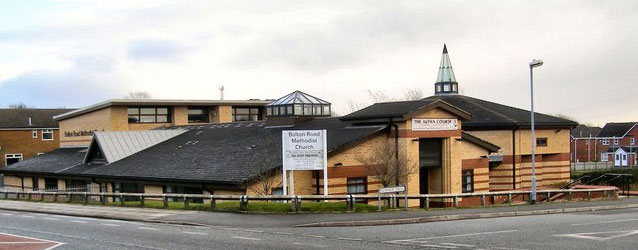 On Sunday 13th August 2000 the first sod was cut on the site of the new church by the Rev. Ted Pullan. Work began apace involving some 30 firms in construction and furnishing. The design centred around an octagonal worship space crowned by an octagonal spire, while a suite of adjoining rooms provided for flexibility. These included a nursery, a youth room, a lounge and a Quiet Room. Stained glass windows retained a traditional element, new banners were added to the old and a new, high-tech digital organ was installed. The new church was opened on Saturday 2nd February 2002 by the Rev. David Reddish, the recently retired Chairman of the Bolton and Rochdale District in the presence of a congregation of 250 members and guests.
On Sunday 13th August 2000 the first sod was cut on the site of the new church by the Rev. Ted Pullan. Work began apace involving some 30 firms in construction and furnishing. The design centred around an octagonal worship space crowned by an octagonal spire, while a suite of adjoining rooms provided for flexibility. These included a nursery, a youth room, a lounge and a Quiet Room. Stained glass windows retained a traditional element, new banners were added to the old and a new, high-tech digital organ was installed. The new church was opened on Saturday 2nd February 2002 by the Rev. David Reddish, the recently retired Chairman of the Bolton and Rochdale District in the presence of a congregation of 250 members and guests.
In 1880 the architects of the new church in Fairy Street had been asked that 'every care should be taken for the convenience of those who worship there'. That request has certainly been upheld and achieved in the modern structure that stands in Bolton Road today.
Source: 'A History of Bolton Road Methodist Church Bury and its origins in Elton' by John R. Bisson.
The book 'History of Bolton Road Methodist Church Bury and its origins in Elton' by John R. Bisson is available for reference only at Bury Library in the Local Studies section.
Summary from the Journal of the Bury Local History Society, Summer 2002.
For information on this society tel: 0161 764 8636
